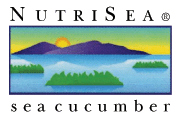|

everything you ever wanted to know about sea cucumbers
Species & History
Sea cucumbers (Class: Holothuroidea, Phylum:
Echinodermata) are a soft-bodied, invertebrate relative of the
starfish and sea urchins. Numbering some 1100 species worldwide, they
are found in both tropical and temperate oceans, where they inhabit
the intertidal zone as well as deeper waters. The first fossil
records of sea cucumbers date from about 400 million years ago.
These are tube-shaped animals which come in a
variety of colors and range anywhere from less than an inch to over
six feet in length. Some resemble worms and burrow in ocean floor
sediments. Others filter feed using an array of retractable tentacles
known as a 'flower' (Figure 1), used to trap organic debris and tiny
marine organisms. One writer aptly described the sea cucumber as, “A
dill pickle that is sprouting it’s own dill."
Sea cucumbers propel themselves by means of
tubular extensions or tube feet arranged in rows along the length of
their bodies. The feet can be extended or contracted by varying the
internal fluid pressure. Like other echinoderms (spiny-skinned
animals), sea cucumbers have a unique type of connective tissue called
“catch connective tissue” which can flow like a fluid, then stiffen
reversibly under neural control.
Human Food Use
Humans have eaten and traded these animals for
centuries. For example, the Chinese have been harvesting them
from the waters of Malaysia and Australia for at least 1000 years.
They are eaten in soups, raw as sushi and as appetizers and
delicacies. The Malaysians refer to sea cucumber as 'trepang'. The raw or pickled
body and internal organs are called 'konowata' by the Japanese and the
salted, fire or sun dried body wall is known worldwide as 'beche de mer' literally translated as
'beast of the sea'. Hong Kong trade in beche de mer reached US $20 million in 1990.
Sophisticated Immune System
Invertebrates such as starfish and sea cucumbers
are ancient animals, but nevertheless they possess a sophisticated
immune system whose elements closely resemble those of modern
vertebrates. These elements include cellular immunity (defender cells
eating invading organisms), a complement-like system (a chain of
biochemical events leading to the encapsulation or destruction of
foreign objects), cytokines (chemical messengers such as interferon
and interleukin which quarterback the immune response) and lectins
(protein molecules involved in the recognition of foreign invaders).
In the sea cucumber, cells of the immune system
are housed in the Polian vesicles, hollow organelles contained in
lymph node-like tissue lining the throat of the animal. This tissue
has been postulated to be the forerunner of the tonsils, adenoids and
thymus.
Why might a creature such as the sea cucumber be useful as a
therapeutic food? At the risk of stating the obvious, since sea
cucumbers have survived for over 500 million years... and our immune systems have
evolved from theirs, many of the molecules and strategies they have
evolved should also work for us.
____________________________
Above is provided courtesy of Dr. George Gillson, M.D., PhD. |

